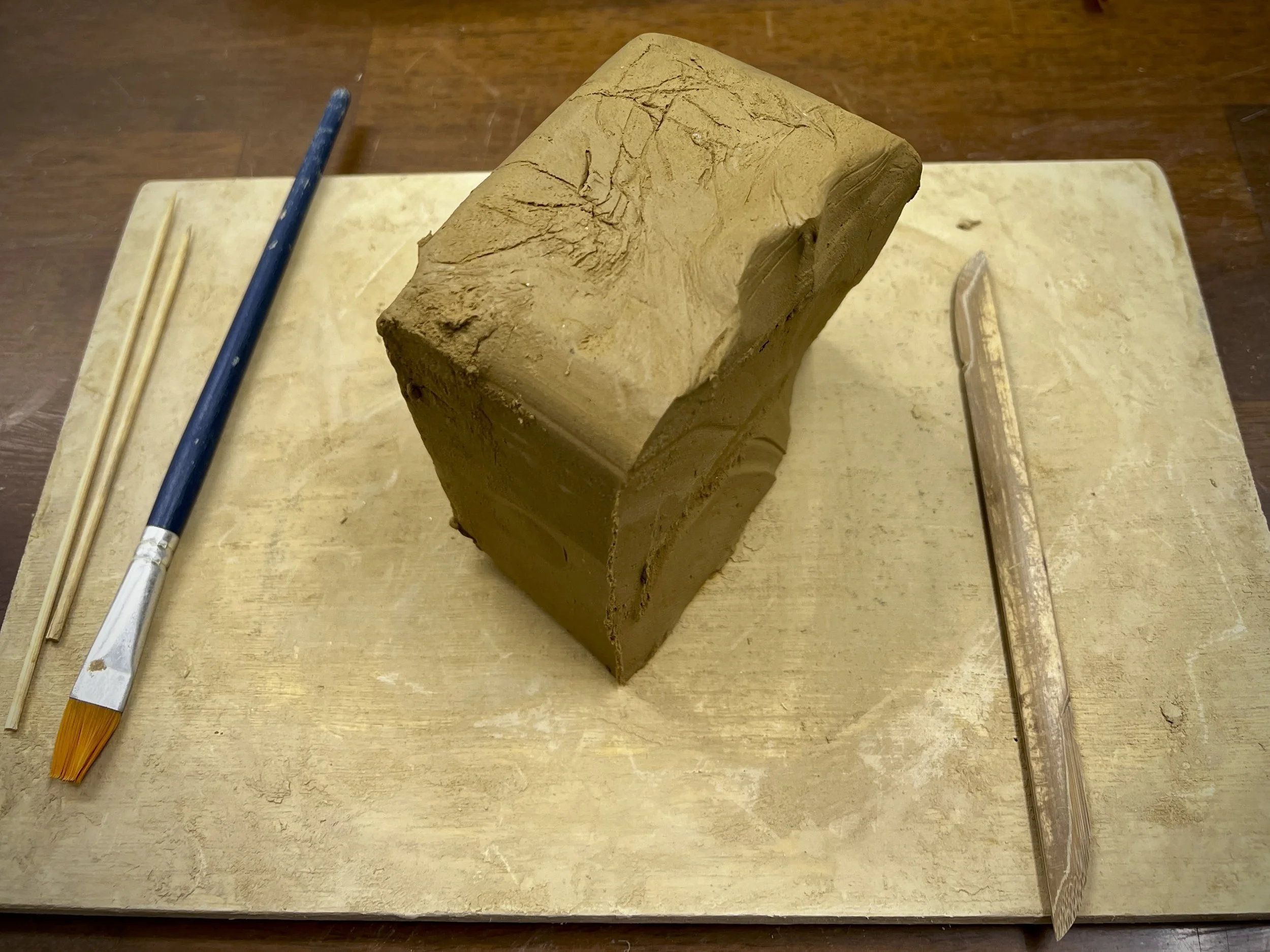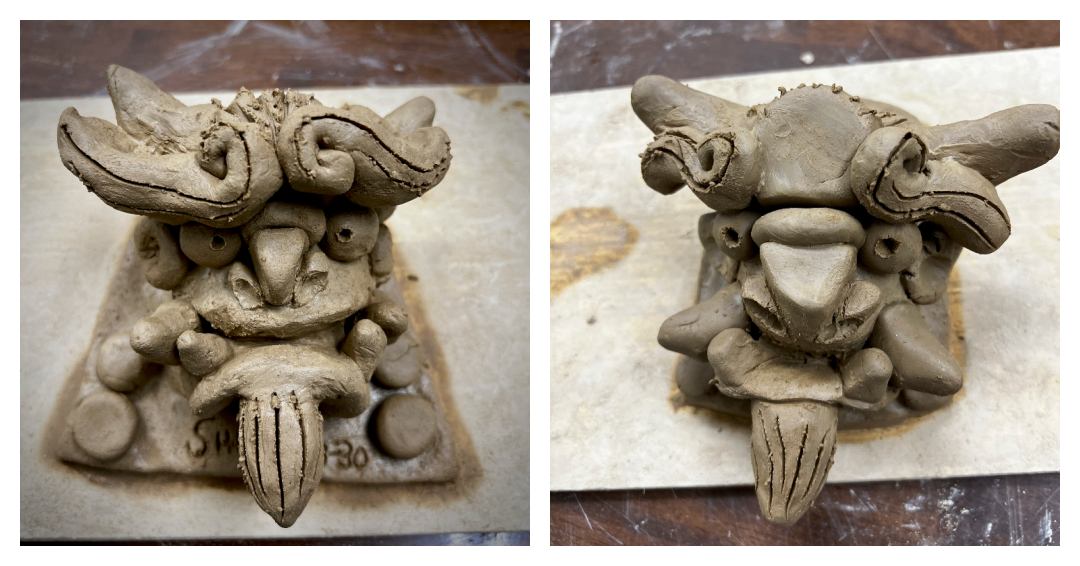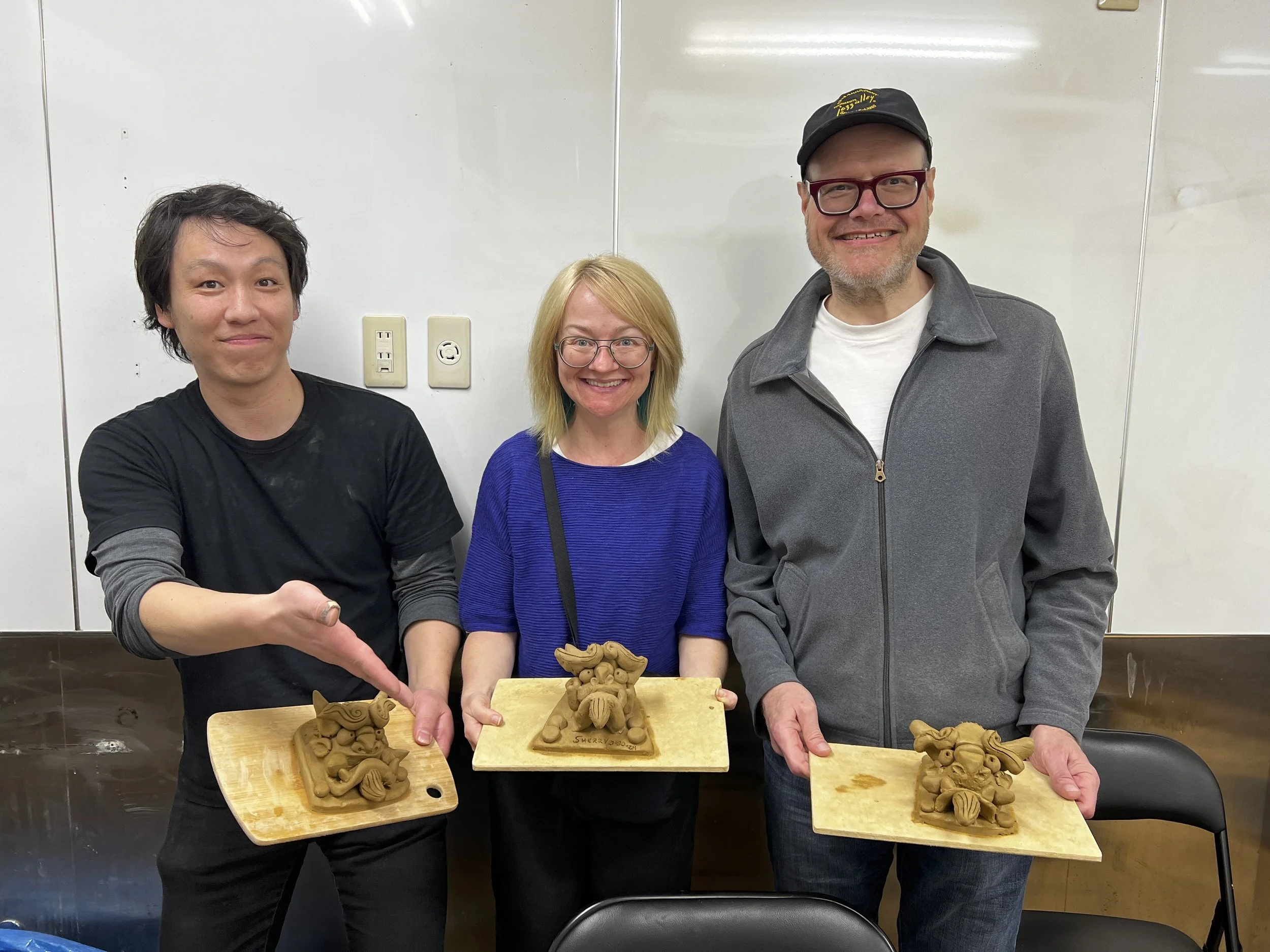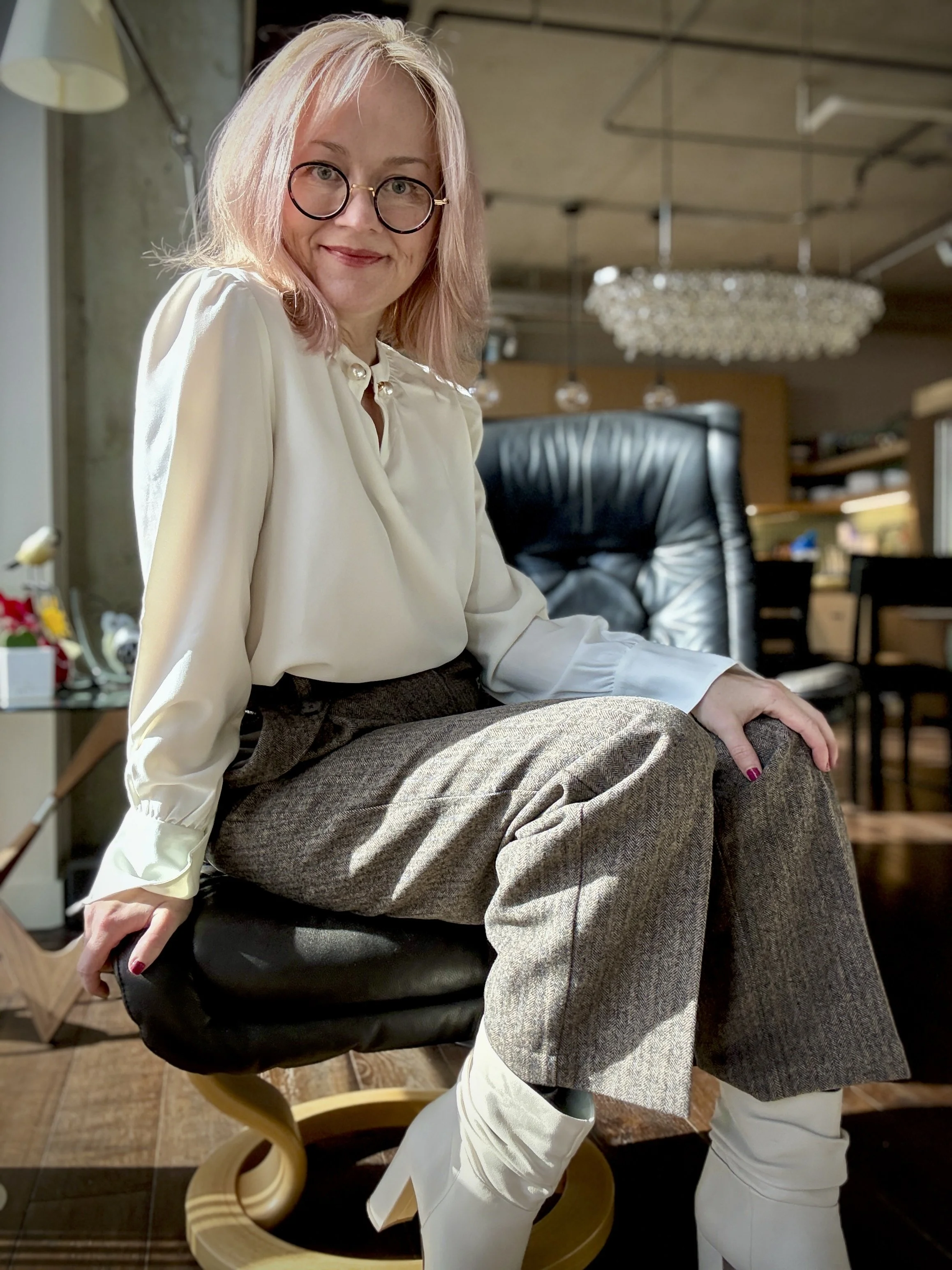A Conversation in Clay
Reading time: About 5 minutes.
By the time we arrived in Kyoto, I was full. Full of temples and train rides. Full of stories and memories I hadn’t yet made sense of. Japan had opened itself to us for nearly two weeks—its beauty, its complexity, its dizzying pace—and I was grateful. But I was also tired.
So when Mike and I stepped out of the Uber onto a quiet Kyoto side street, we were already questioning whether a nap might’ve been a better idea. We were the only ones in our group who had signed up for a workshop billed simply as “make your own roof tile.” We hadn’t been given photos or even a clear description—just a promise that we’d be molding something out of clay.
Even our Japanese guides were puzzled. One guessed we’d be sculpting a miniature version of the curved gray tiles that line rooftops all across Japan—functional, elegant, but hard to imagine as an afternoon activity. I smiled, nodded, and silently wondered if we should’ve gone with mochi-making instead.
The Studio with No Sign
The Uber stopped on a lane so quiet it felt like we’d taken a wrong turn. There were no tourists, no shop signs, no markers to say we’d arrived anywhere at all. Just rows of modest buildings, each one politely unremarkable. No fanfare. No fuss.
And maybe that’s what made it feel so sacred. I had been craving stillness.
While Mike and I stood in the morning sunshine, breathing in the quiet like purring cats, our accompanying guide worked out which door was ours. She beckoned us into a humble front room lit with soft daylight, its walls speckled with gray clay splatters, its air perfumed with damp earth.
Sculptures lined every surface: ogres with wild eyes and furrowed brows, dragons curled mid-roar, serene Jizo Buddhas smiling softly from behind shelves. They felt not displayed, but placed, as if they belonged there. As if they’d been waiting.
And then came Yu.
Yu is a fifth-generation kawara artist, trained in the ancient craft of Japanese roof tiles. His lineage stretches back to the Heian period, a time known for its courtly refinement, artistic brilliance, and the blossoming of Japanese culture. His manner is rooted in kindness.
His open face and dark eyes sparkled with warmth as he welcomed us into his studio. His English was better than our Japanese, though neither was perfect, but we didn’t need perfect. We needed presence. And he offered that without hesitation.
We reached across the studio with our shared wish to connect. He told us about a strange illness he had survived. I told him my grandfather had taught me to count to five in Japanese. His face lit up at this. As I counted, he held up a finger for each number, then applauded like I’d just recited a soliloquy. When we laughed at our misshapen sculptures, he laughed with us, not mockingly, but with joy.
There’s a kind of humanity that makes you feel safer just by being near it. Yu is that kind of human.
Harnessing the Spirit of the Tile
As it turns out, the tiles we shaped weren’t just any roof tiles. They’re called onigawara—ogre tiles, meant to ward off evil spirits. For centuries, they’ve stood watch over the rooftops of temples and samurai homes, their fierce expressions protecting what lies below.
In Kyoto, some are still made the way they were hundreds of years ago: by hand, with clay and intention, and baked in kilns that once fired tiles for emperors.
Each figure holds meaning:
Ogres and lions protect against evil
Water spirits shield from fire and flood
Peaches offer long life and wellness
But there’s another layer, too. A quieter one.
To create an onigawara is to shape something fierce from something soft. To take what is raw, uncertain, and cold, and warm it in your hands until it becomes a protector.
The clay was cold in our hands. Stubborn at first. But as we worked, it softened, shifting from unfamiliar to something resembling the shapes Yu guided us toward. He showed us how to roll the clay, how to shape the curves of an ogre’s brow, how to dig into it gently with a small bamboo tool that looked like it belonged in a dentist’s kit.
Mike and I did our best. Our ogres were, let’s say, expressive. Mine looked surprised and confused to be alive. Mike’s had flaring nostrils and a wild-eyed look, like it had just been startled awake. But they were guardians all the same—scrappy protectors with stories to tell.
Our scrappy protectors. Mine is on the left, Mike’s is on the right.
Yu never let us downplay our efforts. He treated our work like it mattered. Like we mattered. He praised our crooked horns and uneven fangs as if they were sacred. And in a way, they were. Because we weren’t just making tiles. We were making something together—across language, across culture, across the noise of the world.
I didn’t know how much I needed this experience until I was in it.
We were the only two who signed up for the workshop that day. No group. No crowd. Just Mike, me, Yu, and a table of clay. And in that quiet space, something in me shifted. From tourist to participant. From consumer to creator. From overwhelmed to at ease.
I don’t know if Yu thinks of his studio as a temple, but to me, it felt like one. A space where strangers could sit side by side and remember what’s good in the world. Where encouragement is offered freely, and effort is honored more than outcome.
At the end of our time with Yu, we left our little sculptures in his safekeeping so they could dry alongside his in the front room of the studio. A month or two later, they arrived in the mail, each lovingly packed in a box he had prepared by hand.
Since we live in a condo, we can’t hang our tiles on any roof. Nor would we. They are treasures, best kept safe from Seattle’s wet winters. I still haven’t figured out how to display them, so for now, they guard my office with their lopsided gazes.
Every time I pass them, I remember: kindness is ancient. Joy is protective. And connection—real, human connection—is worth carrying home.
I hope you find something like that this week—a small corner of warmth, where kindness speaks louder than words and creation brings us back to ourselves.
P.S.
Endless thanks to Yu for opening his studio, his story, and his heart to us. You can find his handmade onigawara and other beautiful works on his Etsy shop.
And a big thank-you to World Vegan Travel for making this experience possible. Their thoughtful planning, compassionate guides, and unforgettable experiences like this one made our time in Japan truly extraordinary.






